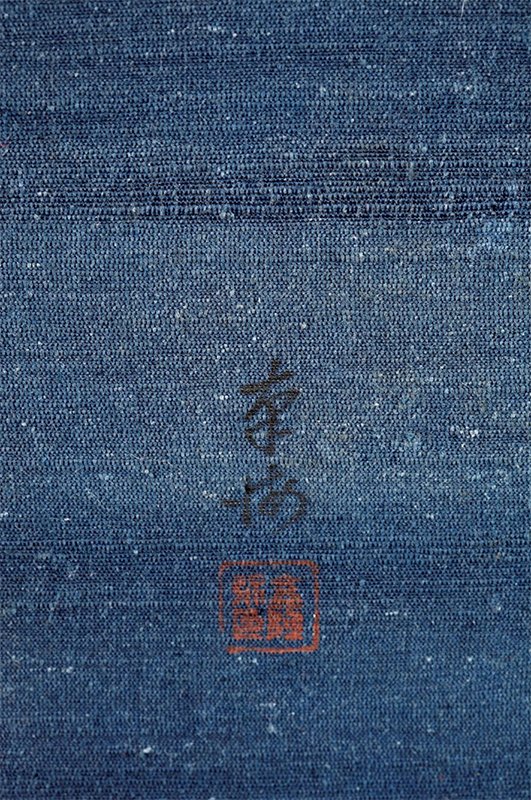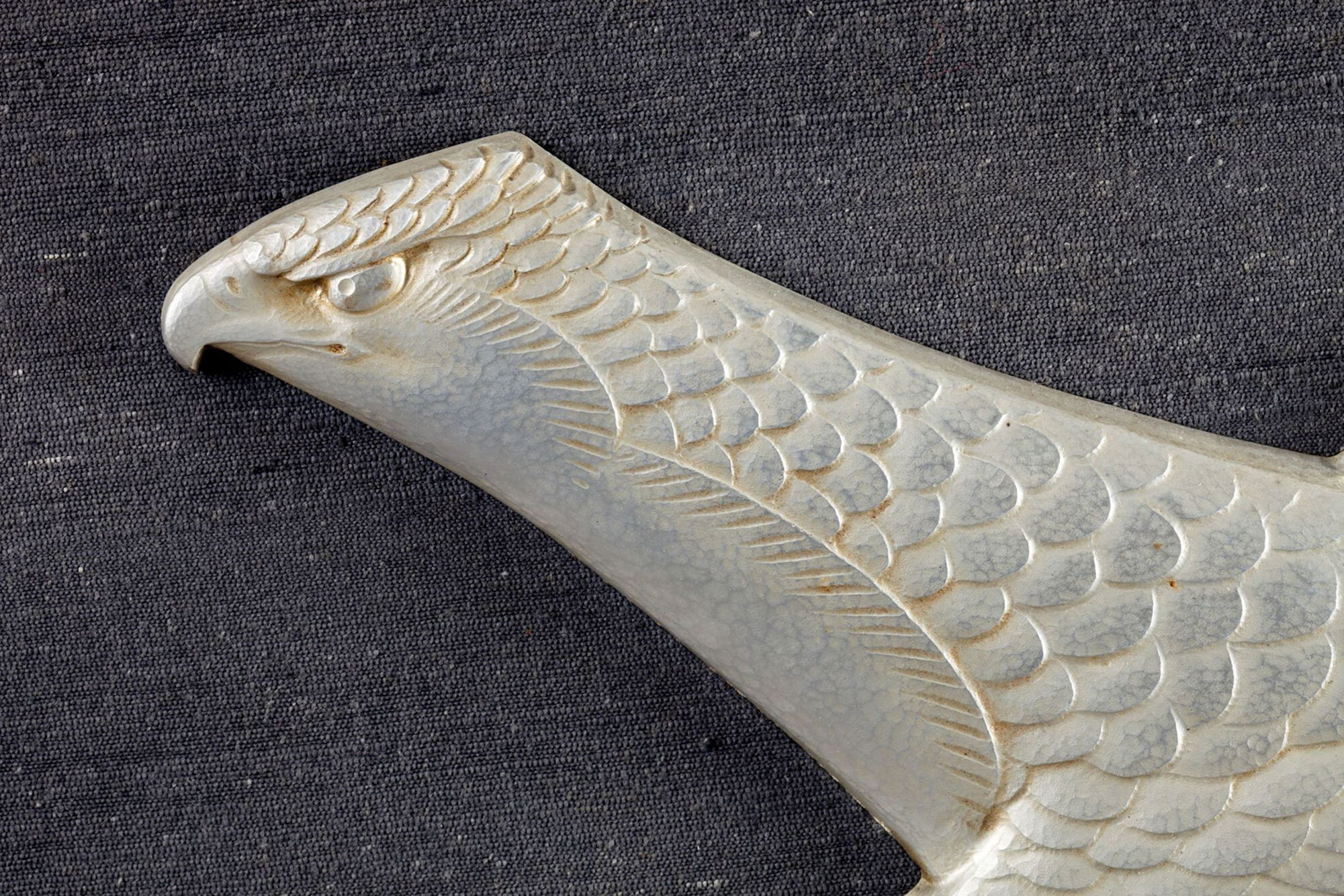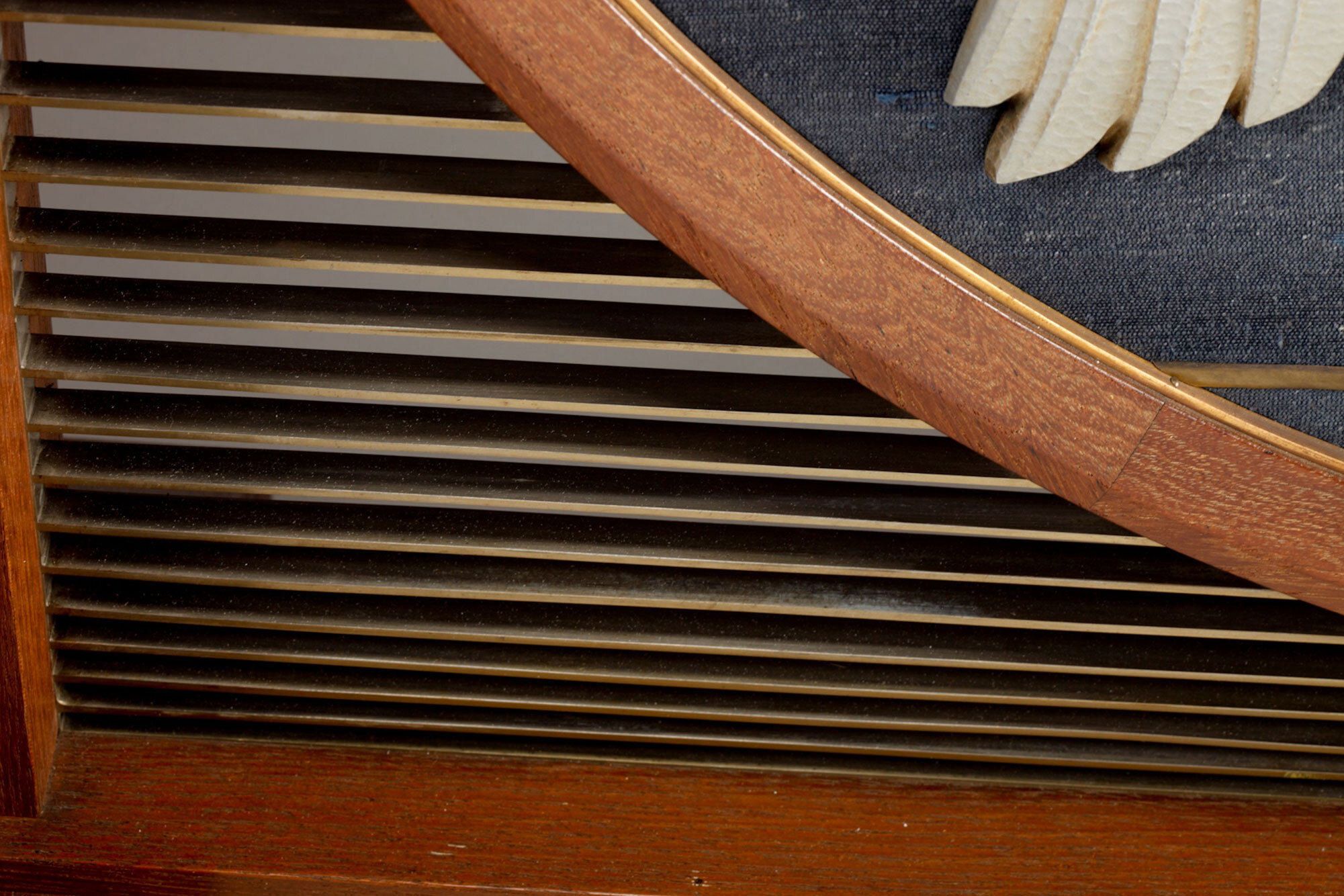POST-WAR & CONTEMPORARY
MATSUBARA NANKAI, 1940 HOSHUKUTEN FACLON SCREEN
Tsuitate or standing screen with a rectilinear from supporting a round, porthole-form plaque ornamented on the face with a modernist falcon in flight among stylized clouds; and on the reverse with the prey, two sparrows, flying below, the frame with repeating horizontal lines suggestive of an ocean liner’s railings. The hawk of carved and hammered hakudo or white bronze; the clouds of carved and hammered shibuichi or silver bronze; the background cloth of indigo-dyed cotton; the sparrows of hammered bronze finished in olive-toned yaki-urushi or basked lacquer; the frame of chestnut wood with a lacquer finish, finished on the sides with two diamond-form, shibuichi decorative nail-head covers (to hide the pinning), the horizontal bars of hakudo. Signed on the reverse in sumi ink on the indigo cloth by the artist: Nankai, and sealed in red (Matsubara Nankai, the go or art name of Matsubara Shigenobu, 1895 – 1950). Showa 15 or 1940.
With the tomobako or original box, inscribed on the exterior of the lid: Matsubara Nankai Saku, Taka no Hori Tsuitate, Osaka Ikuma Kinsei or Made by Matsubara Nankai, Carved Hawk Standing Screen, Finely Made by Ikuma of Osaka.
Like Hattori Tokeiten in Tokyo, Ikuma was a commissioning house that represented the work of leading artists.
This screen was made for exhibition at the Hoshukuten in 1940, and it is illustrated in the Nittenshi, volume 14, page 302, number 493.
For the artist’s 1933 exhibition work shown at the 14th Teiten, c.f. Kagedo’s catalogue Yukei, number 137.
From Tokyo, Matsubara Nankai graduated from the Kogei School in Taisho 2 (1913) and studied metal carving under Shoami Katsuyoshi and Nakagawa Joeki X, and later with Tsuchida Katsunari. He learned hammering techniques from Maruo Tsunayoshi and Shimizu Nanzan. After graduating from the Tokyo School of Fine Art in 1922, he adopted the go or art name of Nankai. His work was first accepted into the government-sponsored exhibitions at the 11th Teiten in 1930. Subsequently he showed at the 12th – 14th Teiten in 1931 – 1933, at the Reorganized Teiten in the spring of 1936, at the 3rd Shin-Bunten in1939, the Hoshukuten in 1940, and the 4th and 6th Shin-Bunten in 1941 and 1943. After the Pacific War, Nankai returned to the national exhibitions with the 2nd Nitten in 1946, the 3rd in 1947 (when he took the tokusen or grand prize), and at the 5th and 6th in 1949 and the year he died, 1950.
Matsubara Nankai, 1940 Hoshukuten Exhibition, Falcon Screen
Artist Name: Matsubara Nankai
Period: Showa Pre War
Styles: Art Deco, Modernist
Mediums: Lacquer, Metalwork
Origin Country: Japan
34 ½” high x 34 1/8” wide x 11 ½” deep
This piece is no longer available.






